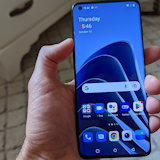 The HTC One X is HTC’s new Android 4.0 Ice Cream Sandwich (ICS) flagship device. Not only that, but the One X was the world’s first widely-released quad-core smartphone. As such it represents the next generation of the smartphone market and is an exciting indicator of things to come. For the meantime we got our hands on one to find out if it’s all that it’s cracked up to be and if the One X has a chance of taking some of the Android game back off of Samsung and delivering it to the waiting hands of HTC.
The HTC One X is HTC’s new Android 4.0 Ice Cream Sandwich (ICS) flagship device. Not only that, but the One X was the world’s first widely-released quad-core smartphone. As such it represents the next generation of the smartphone market and is an exciting indicator of things to come. For the meantime we got our hands on one to find out if it’s all that it’s cracked up to be and if the One X has a chance of taking some of the Android game back off of Samsung and delivering it to the waiting hands of HTC.
HTC One X Physical Design
The HTC One X represents a new approach taken by HTC towards case design. Taking a leaf out of Nokia’s Lumia style-book, the One X is crafted out of a single piece of machined polycarbonate. That means it’s light, feels great to hold, has a smooth surface that doesn’t appear cheap or glossy and it can be colorized without relying on paint. It’s also quite durable, as polycarbonate is capable of absorbing some of the shock. Even if it is scratched the nature of its manufacturing materials means that the obviousness of any external damage will be minimized, as the case is the same color the whole way through so no discoloration should be evident.
The shape itself is still very HTC, but different enough for us to take notice. From the side the One X almost appears to be convexly curved like the Galaxy Nexus, but in reality the screen is almost flat. We say almost because at the edges there’s a slight fall-off, once again reminiscent of the Nokia Lumia line. This mild rounding makes for an incredibly comfortable experience when holding or using the device. It’s one of those small differences that helps draw the line between a solid smartphone and a premium flagship device.
Being a single piece there’s no tri-color rear plate this time; the One X is the same color the whole way around. The front and side edges have been glossed, making for a shinier appearance than the back, but it’s not particularly noticeable.
The USB charging port is found on the left, the volume rocker on the right and the power/lock button sits atop the device. It can occasionally be a bit difficult to hit the power button, but that’s more due to the large size of the One X, rather than any mechanical design flaws.
The speaker at the top of the handset falls away from the screen ever so slightly, allowing the One X to sit quite snugly against the ear without any discomfort. In fact, rather than a raised lip or bezel as we often see, the screen is actually the highest part of the device when sitting flat on a table.
One small problem is that the battery is not removable. It’s not an issue for most users, but a lot of people like the option of grabbing themselves that extra battery for those times when they spend a while in-between charging stations.
Folks with smaller hands should also be weary of the HTC One X’s size. It’s 4.7 inch display makes for a formidable form-factor. We didn’t have any problems with our large, clumsy hands, but we suggest actually physically holding either this phone or one of similar dimensions before deciding on a purchase. You might find it to be just a little too much of a stretch at the end of the day.
Overall we’d have to say that the One X features a wonderfully functional and stylish design. However, we did wonder at the inclusion of the 3 capacitive buttons sitting below the display. As we saw with the Galaxy Nexus, the ICS operating system (OS) allows and even anticipates the implementation of virtual on-screen buttons. We’ll get in to how this affected the user interface (UI) later, but for now we’ll just say that we found it intriguing.
 Display and UI
Display and UI
The 4.7 inch 720p HD display of the HTC One X is simply gorgeous. Colors were vibrant, whites were impressively crisp and blacks were handled quite well. Viewing angles were also something that surprized us; the One X’s display didn’t seem to have any angles at which it began to lose image quality. At times it was almost like viewing an incredibly bright sheet of paper and bright it was. The default brightness setting was set at around to thirds of the potential brightness and even that was difficult to view straight-on in anything other than direct sunlight. We ended up setting it to just below half brightness and found that to be more than sufficient for our regular viewing needs.
The One X comes running the Android 4.0 ICS operating system underneath HTC’s very own Sense 4 UI. The mix makes for a wonderfully smooth and visually impressive experience and is probably the best Android interface we’ve used to date.
The standard HTC multi-purpose Lock screen is still there with its shortcuts to Email, Messages, Phone and Camera, as well as the option to simply unlock the phone. With ICS has come the new ability to pull down the notifications bar without first unlocking the phone. This is a fantastic addition and we can’t for the life of us figure out why it hadn’t been implemented on a wide scale before Ice Cream Sandwich. Obviously if you have password or face protection on then the ability to pull down notifications is blocked until your password has been entered or face has been recognized.
We love the idea of resizable widgets brought in with Ice Cream Sandwich. Not every widget can do it just yet, but those that can are customized easily enough. Simply tap and hold the widget, after releasing it small arrows will appear on each side. You can just drag these arrows out to resize. Adding new widgets to Home Screens is easy too. Tap and hold on any Home Screen and a widget menu will pop up. You can add widgets to any home screen from this menu, meaning that you can add multiple widgets to different screens without having to manually switch between them.
 The UI itself was quite smooth, but we did find a few problems to do with lag time between making a command and it registering with the handset. Often within an app we would hit a tab, or press the back button and have to wait a few seconds before anything would happen. This became increasingly frustrating when, after a few seconds of nothing, we would hit the back button again several times only to have a chain of ‘Back’ commands suddenly fly out in rapid succession and we’d find ourselves back at the home screen.
The UI itself was quite smooth, but we did find a few problems to do with lag time between making a command and it registering with the handset. Often within an app we would hit a tab, or press the back button and have to wait a few seconds before anything would happen. This became increasingly frustrating when, after a few seconds of nothing, we would hit the back button again several times only to have a chain of ‘Back’ commands suddenly fly out in rapid succession and we’d find ourselves back at the home screen.
Oddly enough, despite the powerful quad-core processor, this is the most lag time we’ve ever experienced with an HTC smartphone between input and registry. At first we considered that it might be due to HTC’s tendency to clutter up the available Home Screens with active and power-hungry widgets. However, after removing as many as we could we noticed no visible improvement in performance in the troubled areas.
To clarify, it’s not as if the HTC One X is a laggy device; far from it. It’s just that within certain apps, even common ones such as Words With Friends, we found it to have considerable lag on occasion. We adjusted to it quite quickly and after a short while it wasn’t so frustrating any more, but it remains nothing short of a curiosity that such a powerful handset would suffer from these kind of problems.
Overall apps launched and closed very quickly and multi-tasking didn’t seem to be a problem. The multi-tasking button that has replaced the Menu button in ICS didn’t actually require that much attention, as the One X seemed to be powerful enough to ignore running any number of processes simultaneously.
Concerning the lack of a Menu button, we were once again thrown in to the realm of minor confusion by the One X. It’s in no way HTC’s fault that Google decided to do away with a static Menu button and introduce the Multitasking key instead. However, Google seems to have intended any issues that would arise from this decision to be tackled by the use of virtual keys.
Virtual keys are what the Galaxy Nexus employs instead of capacitive buttons. Basically a virtual key does the same job as a capacitive button, except it is part of the main display and not a separate and static section of the interface. Virtual keys can change in size, light up when they are pressed, disappear when they are not needed and even have other keys appear alongside them when contextually relevant. This last bit of handy functionality is where the HTC One X seems to fall short.
Due to the lack of a hardware menu button and also the lack of ability to squeeze and on-screen menu button in beside the 3 main keys the One X was often forced to include a black button that ran the length of the bottom of the screen in situations where a menu button was necessary. This might not seem like much, but when one of the selling points of a device is the size of its screen then it would seem appropriate to make best use of that feature, rather than filling it up with unnecessary on-screen buttons. Obviously this was not a fatal flaw, but it’s still a minor issue that we feel could have been easily addressed by HTC.
Don’t let our moaning fool you; the HTC One X functioned quickly, smoothly and admirably for the most part. We might sound like we’re complaining a lot, but that’s just because the One X was such a premium piece of smartphone that all of the little flaws really stood out every time we encountered them. Like we said it’s probably the best Android experience we’ve had to date in terms of general UI navigation and the large 720p display was the proverbial HD cherry that really sealed the deal for us.
 Camera
Camera
The One X is one of HTC’s new line of smartphones that carries the fancy ImageSense imaging chipset. ImageSense is HTC’s way of finally stepping up to the plate and attempting to wrestle the title of ‘best mobile camera’ from Apple.
Even so, HTC isn’t quite there just yet. The 8MP shooter on the One X was far better than anything we’ve seen from HTC thus far; it’s just not quite as good as the iPhone 4S’ offering just yet. Shots in well-lit areas came out fantastically and dimly-lit situations turned out better pictures than we’ve yet seen on Android with any kind of reliable regularity. We did notice some pretty intense light bleeding for shots with varying brightness, such as an indoor shot with bright sunlight bursting through a window in the background.
Photos could also be taken in rapid succession with an impressive degree of quality, depending on the lighting situation. Shots with flash came out well with minimal discoloration and video quality was comparatively equivalent to picture quality (ie: good in well-lit situations and tolerable in the dark). All in all we’d definitely give the One X’s camera a big thumbs-up and we hope to see this kind of progress continuing on in the Android market.
An added bonus to all of this was that our One X came with an added drop-box perk. Drop-Box is a cloud storage service that, in the context of the One X, acts as a backup for all of your photos and videos taken on your smartphone. Generally Drop-Box subscribers have to pay a fee to get anything over a 2GB storage account, but HTC One X owners will apparently get a full 25GB for no added cost. We, unfortunately, weren’t privilege to this perk as ours was just a review model, but we’re assured that
 Battery Power and Heating Issues
Battery Power and Heating Issues
Every manufacturer has its demons and for HTC it’s battery power. Traditionally HTC smartphone have suffered from significantly inferior charge retention to their contemporaries, but it’s definitely something that HTC has been making great strides towards improving of late.
The One X is a great example of an HTC smartphone that doesn’t suffer from the mistakes of its forebears. It may boast a large, HD screen and a quad-core processor but it still easily lasted a day when we hit it with medium-to-heavy use. As always removing any unused widgets from the Home Screens is advisable (especially the full-screen animated weather widget), as it will noticeably improve battery life further.
As we expected the HTC One X did have a few heating issues when pressed. Whenever we pushed it with a graphically intensive game, or when it was unsuccessfully searching for an internet connection, we found that the top of the handset heated up quite a bit. It wasn’t as bad as some other devices, such as the Galaxy S II or the Motorola Atrix, but it was still noticeable and, at times, uncomfortable. It’s not a deal-breaking issue but it’s definitely something to keep in mind.
Music and Video
Video playback on the One X was, unsurprisingly, awesome. The incredibly bright 720p display made for fantastic visuals and the large screen really allowed us to immerse ourselves in whatever we were watching. Not much detail to go in other than the fact that color saturation was great and there was minimal-to-no image bleeding.
We did like the added touch of being able to take a screenshot whenever we wanted. Tapping the screen would bring up the standard menu, with a little shutter button that had been added to the right-hand side. Tapping said button would produce a freeze frame that saved itself in to your video folder. We can’t think of too many uses for it but it’s still a nifty little addition.
The music player was more than functional. It boasted a few aesthetic changes when compared to previous versions of the Sense music app, but overall it was the same old reliable system.
The main screen had 3 options up top: My Phone, SoundHound and TuneIn Radio. My Phone links to your own personal music selection. SoundHound is a music identification program, ie: activate SoundHound whenever you hear a song you want to know the name of and SoundHound will listen in and try to identify the artist and song title for you. TuneIn Radio is your basic modern smartphone Radio app. It has a variety of choices, but we mostly just stuck to our own personal selections.
 Browsing and Keyboard
Browsing and Keyboard
Browsing on the HTC One X was absolutely fantastic. The lengthy screen coupled with vibrant colors, potentially-blinding illumination and 720p HD resolution provided clear and easy website navigation, even on non-mobile sites.
The quad-core processor made short work of pinch-to-zoom commands and the HD resolution meant that even at maximum zoom text came out sharply with barely a whisper of visible pixilation.
On top of processor speed, we found the browser to be generally faster at loading web pages than other high-end devices that we’ve tested on the same network. We’d have to say that this was one of the best mobile browser setups that we’ve ever encountered.
The keyboard also benefitted from the large screen. Portrait-mode wasn’t incredibly easy for our large fingers, as the display is still quite thin compared to its length. However, we didn’t have any problems outside the norm and when switched to landscape-mode our clumsy digits flew across the screen with reassuring accuracy.
We never found the keyboard the lag behind our typing and switching between portrait and landscape was as fast as it was smooth.
The larger screen obviously made tasks like reading emails or messages very easy as well, adding to the overall air of simplicity.
 The WhistleOut Opinion
The WhistleOut Opinion
Despite some the occasional bit of lag when executing a command the HTC One X was a simply fantastic smartphone. It looked great and really felt like a premium device when held in the hand. The user interface was, for the most part, smooth and functional. The display was astounding and online activities were functional to awesome. The camera was a significant improvement over previous models and the media integration was solid.
Obviously the heating issue is something to be mindful of, but we didn’t find it to be particularly worse than the current generation of dual-core smartphones so it’s in a way forgivable.
At the end of the day we’d definitely recommend that anyone looking for a new top-end smartphone give the HTC One X some serious consideration. It might be worth waiting till the end of May to see how the Samsung Galaxy S III fares, as well as what Apple has in store for us with its next generation of iPhone come mid-June. But if you’re absolutely after an Android smartphone right now we can’t think of anything better than the HTC One X.



Related Articles
Find Better Phones and Plans
Hundreds of cell phone plans unpacked. All the facts. No surprises.



































